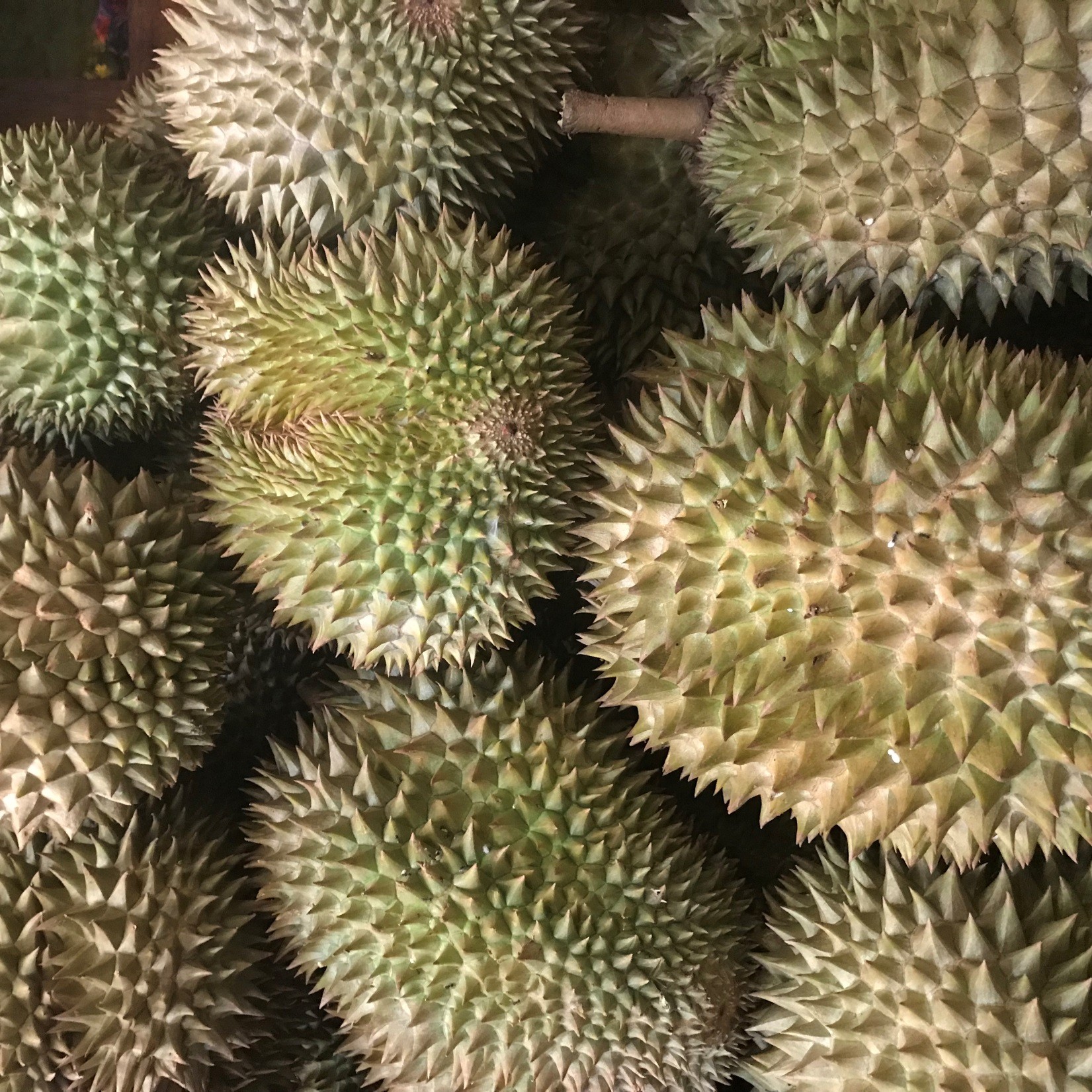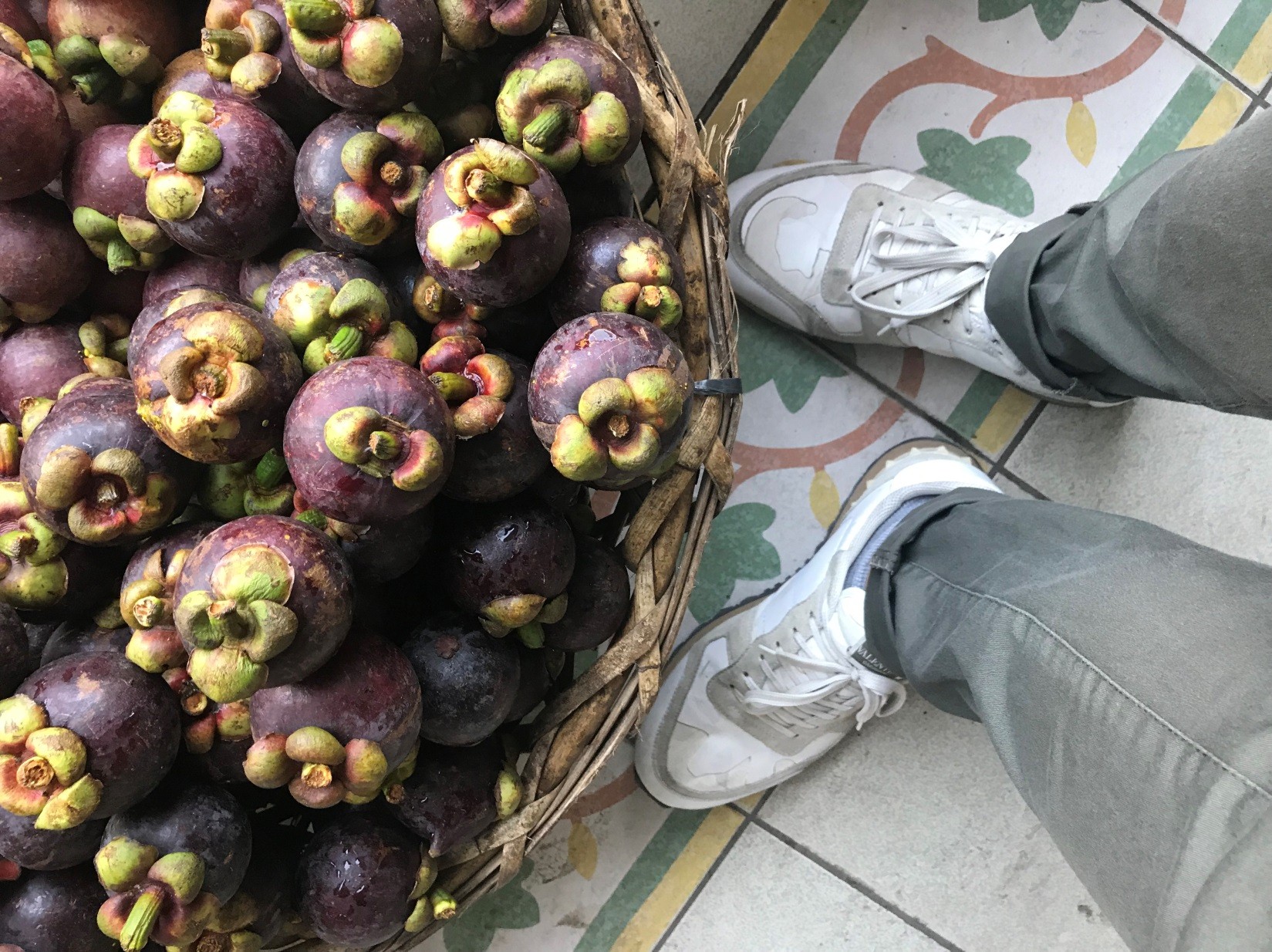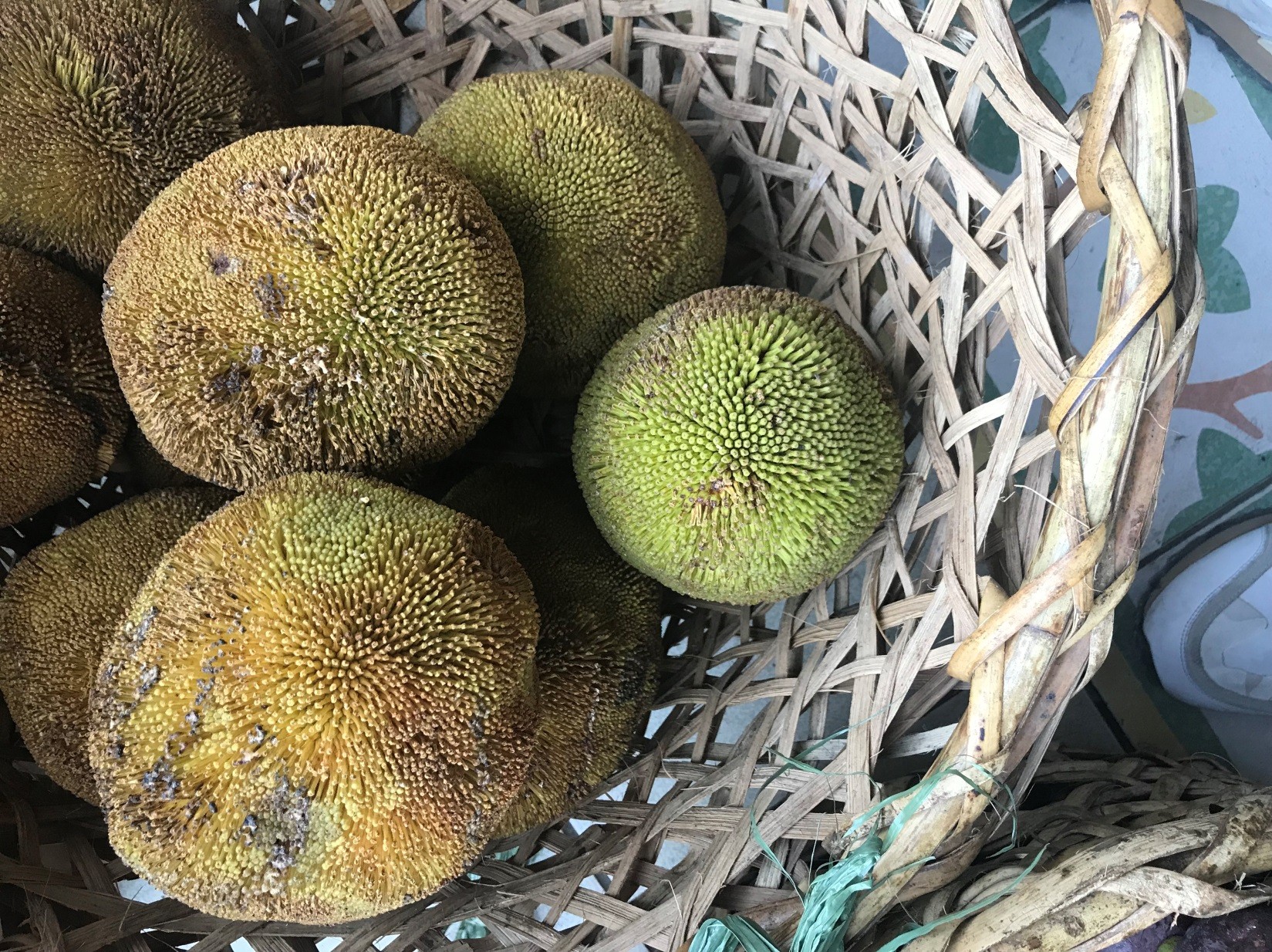The highlights of the Kadayawan Festival may be over, but the main reason why Dabawenyos celebrate Kadayawan is still out there on the city’s festive streets. What I am talking about is the bountiful harvest of native fruit which clog the city’s street corners. Aside from becoming more affordable thanks to a bountiful supply, eating fruits at the peak of their season ensures that they taste better than if they were produced off-season.
Here is a short list of fruits of the season which locals love and which visitors to the City in Bloom should try.
 Durian
Durian
With its peak season of September still on the horizon, durian is already plentiful on the city’s streets perfuming the air with its love-it-or-hate-it-smell. Fans of the “King of Fruits” love its rich and creamy texture paired with sweet milky flavour.
Although Malaysia, Indonesia and Thailand also produce durian, Davao’s durians are unique as there are many different varieties of Durian available in the fruit markets. From the famous Puyat and Arrancillo varieties to the new D101 and the local Native lines, each variety tastes slightly different, each catering to the different preferences of durian diners.

Rambutan
Red and fuzzy all-over, August is the peak season for rambutan. Easy to eat and appreciate, rambutan tastes similar to the Chinese lychee with a slightly floral note and a juicy succulent pulp.
 Mangosteen
Mangosteen
If there is a king of fruits, then there should be a queen. dubbed the “Queen of Fruits” the mangosteen also sees its peak season from August through to September. Small, round and a deep purple in color, opening a mangosteen fruit reveals a cluster of pulpy vesicles which are sweet and tangy. The purple rind of the mangosteen can also be cleaned, dried and turned into tea that is used to moderate blood sugar.
 Marang
Marang
If there was a starter fruit for people who wish to have their first taste of durian then I would highly suggest a taste of marang first. Slightly less odorous than the durian, marang can also be found in abundance from August to September. A relative of the jackfruit, the marang fruit looks slightly like a hedgehog. Easily peeled, the edible portion of the fruit is pulpy and tastes like a mix of pears, berries and banana.
Aside from the pulpy flesh, the seed of the marang can be boiled or roasted, peeled then eaten. The “nuts” tastes much like a cross of potato and chestnut.
 Pomelo
Pomelo
A cross between a native orange and the Chinese pomelo, Davao’s sweet pomelo never always makes it to the top of everyone’s must eat list. Sweet, juicy and tangy, Davao’s pomelo stands on a class of its own. Although the natural season of Davao’s pomelo is from December to February, the fruit is basically available all-year round.






